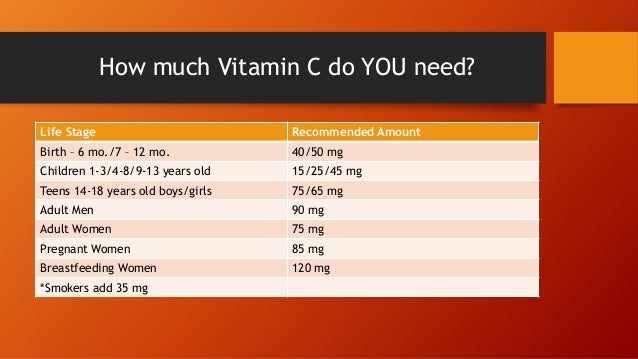It's essential for healthy bones, teeth, gums, and blood vessels. Ask your doctor if supplements are right for you.Vitamin EVitamin E is an antioxidant and helps protect cells from damage. It is also important for the health of red blood cells.Vitamin E is found in many foods, such as vegetable oils, nuts, and green leafy vegetables. It's also added to some breakfast cereals.Teens should get 2.4 micrograms of vitamin B12 daily.Vitamin B6Vitamin B6 is important for normal brain and nerve function.
It helps maintain healthy skin and is important for nerve function.You'll find niacin in red meat, poultry, fish, fortified hot and cold cereals, and peanuts.Teen guys need 16 mg of niacin daily. It is also needed to make DNA.Liver, dried beans and other legumes, green leafy vegetables, asparagus, and orange juice are good sources of this vitamin. So are fortified bread, rice, and cereals.Teen girls and guys need 400 micrograms of folate daily. Although more supplementation studies are needed, ensuring vitamin D adequacy throughout childhood and adolescence seems prudent.
The Linus Pauling Institute recommends that adolescents aged 14 to 18 years should have a daily intake of 600 to 1,000 IU (15 to 25 μg) of vitamin D, consistent with the recommendations of the Endocrine Society . According to the Endocrine Society, at least 600 IU/day may be required to maximize bone health, and 1,000 IU/day may be needed to increase serum levels above 30 ng/mL (75 nmol/L) . Given the average vitamin D content of the diets of adolescents, supplementation may be necessary to meet this recommendation.
The RDA of magnesium for those aged 14 to 18 years, 410 mg/day for boys and 360 mg/day for girls, was derived from results of balance studies in adolescents. Good dietary sources of magnesium include nuts, and green leafy vegetables because magnesium is part of chlorophyll — the green pigment in plants. Meats and milk have an intermediate magnesium content, with milk providing mg per cup . Although data are limited, some studies have found that a large percentage of adolescents have magnesium intakes below recommended levels ( ).
In an analysis of NHANES data, US adolescents who consumed milk had higher daily magnesium intakes than adolescents who did not drink milk . However, NHANES data show that US adolescents (12-19 years) on average only consume about 1 cup of milk daily . Low-fat milk, nuts, whole grains, and green leafy vegetables are important sources of magnesium for adolescents. If adolescents do not meet the RDA through dietary sources, LPI recommends a combined magnesium-calcium supplement. Specifically, data used by the FNB to determine calcium accretion came from a recent longitudinal study in 642 Caucasian adolescents aged 14 to 18 years . Thus, the RDA was set at 1,300 mg/day; this level of calcium intake is expected to cover the needs of 97.5% of adolescents.
Vitamin B6 is required for heme synthesis and in the synthesis and metabolism of amino acids— the building blocks of proteins. Thus, the vitamin has obvious relevance to adolescent growth and health. Dietary intake recommendations of vitamin B6 for adolescents were established by extrapolating data from adults, using metabolic body weight and accounting for growth. The RDA for boys aged 14 to 18 years is 1.3 mg/day, and the RDA for girls aged 14 to 18 years is 1.2 mg/day . Only a few studies have evaluated vitamin B6 status specifically in adolescents.
The same investigators found more than 40% vitamin B6 inadequacy when a group of 112 adolescent girls (12- and 14-year-old) were followed for two years . For information on dietary sources of the vitamin, see the article on Vitamin B6. The RDA for vitamin A is based on the amount needed to ensure adequate stores of vitamin A in the body to support normal reproductive function, immune function, vitamin A-dependent gene expression, and vision . Vitamin A intake recommendations for adolescents were derived by extrapolating the recommendation for adults using metabolic body weight, accounting for growth.
For information on vitamin A content in foods, see the article on Vitamin A. The formulas also contain vitamin D, magnesium and zinc which contribute to the maintenance of normal bone health. Vitamin C has a number of important roles during growth and development, including being required for the synthesis of collagen, carnitine, and neurotransmitters . Vitamin C is also a highly effective antioxidant and is important for immunity . Further, vitamin C strongly enhances the absorption of nonheme iron by reducing dietary ferric iron (Fe3+) to ferrous iron (Fe2+). Specifically, iron absorption is two- to three-fold higher with co-ingestion of 25 to 75 mg of vitamin C .
This has special relevance to adolescent health, considering the fact that iron deficiency is prevalent among adolescents, especially girls . The RDA for adolescents aged 14 to 18 years, which was extrapolated from recommendations for adults based on relative body weight, is 75 mg/day and 65 mg/day of vitamin C for boys and girls, respectively . As we've seen, the use of multivitamins by teenage girls can help them ensure that they consume an adequate amount of essential nutrients on a daily basis, especially when they don't eat enough of the right foods. Although multivitamins are not a replacement for eating healthy and making the right lifestyle choices they can certainly help young women stay on top of their health and aid their growth and development. By consuming the right nutrients from an early age teenage girls and set themselves up for success for the rest of their lives. The teen years are a time when parents often start to have less control over their children's eating habits.
Teenagers begin to eat more food away from home, have a bigger say in family meal choices and often snack more on foods that are high in fat, sugar and/or salt but low in other nutrients. At the same time, some teens may start to skip meals, experiment with vegetarian diets, eliminate food groups such as meat, dairy or carbs, or closely monitor what they're eating to control their weight or bulk up. The end result can be very unbalanced diets – often with too much saturated fat, sugar and salt but too little fibre, a lack of fruit and veg and not enough vitamins and minerals during this time of rapid growth. Severe iron deficiency leads to iron-deficiency anemia; anemia affects more than 30% of the global population . Adolescents have increased requirements for iron due to rapid growth.
In particular, adolescent girls are at a heightened risk of iron deficiency due to inadequate intake of dietary iron, especially heme iron; increased demands of growth; and iron loss that occurs with menstruation. Following puberty, adolescent girls have lower iron stores compared to adolescent boys . This may be of major concern in light of the sizeable numbers of subjects in many countries with serum 25D3 levels below 50 nmol/l, especially during winter. However, much of this evidence is from studies in adults and whether poor vitamin D status in childhood is a risk factor for these chronic diseases is less well understood. Moreover, the biochemical definition commonly used to classify an adult as marginally vitamin D deficient, or vitamin D insufficient, may not be appropriate for use in children and/or adolescents. The present review will begin with a brief recap of the physiological roles of vitamin D, and then will briefly consider the issue of defining vitamin D status.
Finally, some possible modes of addressing low vitamin D status in childhood and adolescence will be considered. Meat, chicken, fish, eggs, nuts and legumes (e.g. beans and lentils) are good sources of iron and protein. Iron is needed to make red blood cells, which carry oxygen around your body. During your teenage years, you'll start to menstruate, or get your period, and this leads to loss of iron. If you don't get enough iron, you can develop anaemia, a condition that can make you feel tired and light-headed and short of breath. Not eating enough protein when you are still growing, or going through puberty, can lead to delayed or stunted height and weight.
Include meat, chicken, fish or eggs in your diet at least twice a day. In general, multivitamin/mineral supplements contain only a small percentage of the RDA for calcium and magnesium; therefore, intake of calcium and magnesium from dietary sources, such as low-fat milk, is important. The amount of bioavailable iron in food is influenced by the iron nutritional status of the individual and also by the form of iron . Individuals who are anemic or iron deficient absorb a larger percentage of the iron they consume than individuals who are not anemic and have sufficient iron stores .
Although heme iron generally accounts for only 10-15% of the iron found in the diet, it may provide up to one third of total absorbed dietary iron . The absorption of nonheme iron is strongly influenced by enhancers and inhibitors present in the same meal. For instance, vitamin C strongly enhances the absorption of nonheme iron by reducing dietary ferric iron (Fe3+) to ferrous iron (Fe2+) and forming an absorbable, iron-ascorbic acid complex.
Organic acids, such as citric, malic, tartaric, and lactic acids, also enhance nonheme iron absorption. Further, consumption of meat, poultry, and fish enhance nonheme iron absorption, but the mechanism for this increase in absorption is not clear . Inhibitors of nonheme iron absorption include phytic acid, which is present in legumes, grains, and rice. Polyphenols found in some fruit, vegetables, coffee, tea, wines, and spices can also markedly inhibit the absorption of nonheme iron, but this effect is reduced by the presence of vitamin C . Soy protein, such as that found in tofu, has an inhibitory effect on iron absorption that is independent of its phytic acid content .
However, when accounting for intake from fortified foods, less than 5% of individuals in that age group have intakes below the EAR . The US Food and Drug Administration implemented legislation in 1998 requiring the fortification of all enriched grain products with folic acid . Globally, more than 50 countries have mandatory programs of wheat-flour fortification with folic acid, but flour fortification is not common in Europe .
Dietary folate inadequacy is common among adolescents in European nations, especially girls . Vitamin C helps your body absorb iron, a mineral that facilitates the transportation of oxygen through your blood stream and helps regulate cell growth. Vitamin C helps to keep your cells healthy and, as an antioxidant, may protect you from illness. The recommended daily intake is 75 milligrams of vitamin C for teen boys and 65 milligrams for teen girls. "Vitamin D is essential for good bone health and for most people sunlight is the most important source of vitamin D.
The time required to make sufficient vitamin D varies according to a number of environmental, physical and personal factors but is typically short and less than the amount of time needed for skin to redden and burn. Enjoying the sun safely, while taking care not to burn, can help to give the benefits of vitamin D without unduly raising the risk of skin cancer. Vitamin D supplements and specific foods can help to keep up sufficient levels of vitamin D, particularly in people at risk of deficiency. While there is no doubt that severe vitamin D deficiency leads to rickets in childhood and adolescence, the impact of less severe vitamin deficiency on health, especially non‐skeletal health effects, is less clear.
It has always been assumed that adolescents are not at risk of low vitamin D status; however, a number of recent studies have shown this not to be the case, especially during winter. In contrast, younger children seem to have a lower prevalence of low vitamin D status. The reasons for the high prevalence of vitamin D insufficiency during adolescence are unclear. Dietary supply of vitamin D, including vitamin D‐containing supplement use, is an important consideration in relation to improving vitamin D status during childhood and adolescence, especially during winter time. Unfortunately, much research effort is still needed to identify what the optimal dietary recommendation for vitamin D should be. According to Holick,54 approximately 30 min of skin exposure of the arms and face to sunlight can provide all the daily vitamin D needs of the body.
When sunlight exposure is limited, dietary intakes of vitamin D, if sufficient, can make a significant contribution to vitamin D status. Vitamin D is a fat-soluble vitamin that is essential for maintaining normal calcium metabolism and is therefore necessary for bone health. The growth plates of bones continue to enlarge, but in the absence of adequate mineralization, weight-bearing limbs become bowed. Adding a variety of foods to a teen's diet can help her get what she needs, and supplementing with multivitamins may benefit some teens. It's important for teenagers to get all the necessary vitamins daily. However, several vitamins are particularly important for growth, development and sustained energy levels.
Fill your diet with a variety of vitamin-rich foods to get plenty of vitamins, as well as other nutrients, without having to worry about taking dietary supplements. Anyone who struggles to eat a healthy, varied, and balanced diet may benefit from taking supplements. For teenagers, it may be helpful to take iron, calcium, and vitamin D if you feel you are lacking these essential vitamins and minerals. Before you or your teenager start taking any new supplements it's a good idea to check with your GP or a pharmacist. The B vitamin, folate, is required as a coenzyme to mediate the transfer of one-carbon units.
Folate coenzymes act as acceptors and donors of one-carbon units in a variety of reactions critical to the endogenous synthesis and metabolism of nucleic acids and amino acids . Moreover, higher intakes of folate in adolescents have been linked to better academic achievement . Like other B vitamins, adolescent intake recommendations for folate were extrapolated from adult recommendations, using metabolic body weight and accounting for growth. The RDA for adolescents aged 14 to 18 years is 400 μg/day of dietary folate equivalents . Vitamin A is a fat-soluble vitamin that is essential for growth and development, normal vision, the expression of selected genes, immunity, and reproduction . Vitamin A deficiency in children and adolescents is a major public health problem worldwide, especially in less developed countries .
Even marginal or subclinical deficiencies in vitamin A may have adverse effects on bone growth and sexual maturation of adolescents . Because of its role in immunity, inadequate intake of this vitamin also increases risk for infectious diseases . Vitamin A promotes proper bone growth and tooth development, making it a vital nutrient for all children and adolescents. According to the Linus Pauling Institute, teens in industrialized countries tend to have low intakes of vitamin A, which is a necessary nutrient for adolescent development.
Teen boys should get 900 micrograms, or 3,000 international units, of vitamin A per day, while teen girls need 700 micrograms, or 2,333 international units of vitamin A daily. Dairy products provide vitamin B12, which is only found naturally in animal foods. This means dairy products are an especially important source of this nutrient for people who follow vegetarian diets and don't eat meat, fish or eggs.
It's important we get enough vitamin B12 as it's needed for our immune and nervous systems to work normally. Plus, dairy products are important sources of good-quality protein in vegetarian diets. Unlike most plant proteins, milk, cheese and yogurt provide all the essential amino acids that we need to build protein. These can't be made by our bodies so we have to get them from the food we eat.
The combo of little interest in nutrition, together with high nutrient needs, means the teen years are one of the main times in life when nutrients are most likely to be lacking in diets. Indeed, studies suggest intakes of some key vitamins and minerals are worryingly low, increasing the risk of deficiencies that may impact on health in the teen years but also later in life. Dairy products provide many of the nutrients that are often missing. Experts recommend waiting until your child is 4 years old to start giving a multivitamin supplement. In addition, keep multivitamins out of your child's reach, and make it clear that they are not candy. The product features 25 important vitamins and minerals such as plant-based calcium, magnesium, and vitamin D.
All of these nutrients are necessary for teens to build strong and healthy bones and muscles. An optimum nutritional intake during adolescence and young adulthood can help set the stage for lifelong health. Teenagers need to have sufficient vitamins and minerals to ensure healthy development during growth spurts, plus as they undergo significant physical and biochemical changes in their bodies. So the importance of obtaining the right nutrients in the diet is vital, just at a time when this may not be a top priority for some busy teenagers. This has all the vitamins and minerals essential for the healthy growth of the brain, immune system support, skin, and overall health of your teenage girls and boys.
We have considered numerous websites and hundreds of user reviews to curate this list of essential multivitamin supplements for teenagers. We have ensured that these products are safe and meet the necessary criteria. Each item on the list has a detailed description of the nutritional value, ingredients, and factors indicating the need for each of these supplements. You can choose one your child needs based on the their requirement and the doctor's advice.
Vitamin A is an over-the-counter vitamin that is naturally present in many foods. Vitamin A is important for normal vision, the immune system, and reproduction. Vitamin A also helps the heart, lungs, kidneys and other organs work properly. There are two different types of Vitamin A. The first, preformed vitamin A, is found in meat, poultry, fish and dairy products.
The second, provitamin A, is found in fruits, vegetables and other plant-based products. The most common type of provitamin A is beta-carotene which can be found in foods and dietary supplements. Dairy products provide several nutrients that can help support our brains, especially important when we're learning, taking exams and using a lot of brain power! Milk, cheese and yogurt are the main providers of iodine in the UK diet. Studies show 19% of teen boys and 28% of teen girls have very low intakes of iodine and so would benefit from more.































No comments:
Post a Comment
Note: Only a member of this blog may post a comment.